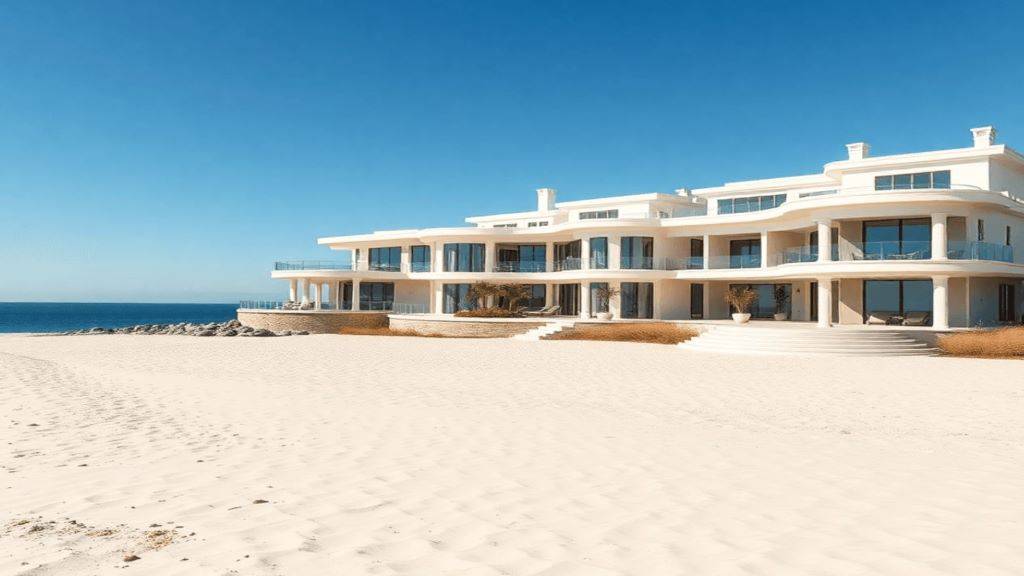Imagine this: stunning beachfront properties, cozy mountain cabins, and extravagant estates sitting unused while countless buyers search for their perfect homes. This contradiction defines today’s luxury vacation home market, where high-end properties remain empty despite strong interest from potential buyers and renters.
The issue of unoccupied luxury vacation homes reveals an interesting mix of wealth, real estate trends, and social impact. These properties, often found in sought-after areas like Florida’s coast or Arizona’s desert retreats, create a unique market situation that influences both local communities and prospective buyers.
In this article, you’ll discover:
- The hidden reasons why luxury vacation homes stay empty
- How seasonal ownership patterns influence vacancy rates
- The strategic decisions behind keeping properties off the market
- The ripple effects on local housing markets and communities
- The disconnect between luxury home locations and areas of high housing demand
Understanding these dynamics helps explain why that beautiful beachfront mansion you’ve been eyeing remains perpetually empty – and why simply having the means to purchase it might not be enough to make it yours.
Let’s explore the complex web of factors that keep these prestigious properties vacant while demand continues to surge in the luxury real estate market.
Reasons Behind the Vacancy of Luxury Vacation Homes
The vacant status of luxury vacation homes stems from several strategic and practical factors that shape the high-end real estate market. These properties serve distinct purposes beyond traditional housing needs.
Second Homes and Investment Strategy
Luxury vacation properties often function as secondary residences rather than primary living spaces. Wealthy investors purchase these homes as:
- Status symbols in prestigious locations
- Long-term investment vehicles
- Tax-advantaged assets
- Private retreats for personal use
Many owners maintain these properties solely as wealth preservation tools, viewing occupancy as secondary to appreciation potential.
Seasonal and Recreational Patterns
Popular vacation destinations experience cyclical occupancy patterns tied to:
- Peak seasons: Summer months in coastal areas, winter in ski resorts
- Holiday periods: Major holidays and school breaks
- Weather conditions: Hurricane seasons, extreme temperatures
- Local events: Festivals, tournaments, conferences
In destinations like Florida’s Palm Beach or Colorado’s Aspen, luxury homes remain empty for 6-8 months annually. This planned vacancy aligns with owners’ usage patterns and maintenance schedules.
Strategic Market Control
Luxury homeowners employ specific holding strategies:
- Selective Buyer Screening: Properties remain vacant while owners wait for qualified buyers who meet specific financial criteria
- Price Optimization: Deliberate withholding from the market to create scarcity
- Market Timing: Strategic delays in listing to capitalize on seasonal price fluctuations
- Portfolio Management: Coordinated release of multiple properties to maximize returns
These tactics help maintain premium pricing in the luxury segment, with some properties held vacant for years to achieve desired returns.
Property Complications
Physical and legal challenges create involuntary vacancies:
- Structural IssuesComplex renovation requirements
- Historical preservation restrictions
- Environmental remediation needs
- Legal EntanglementsEstate disputes
- Ownership conflicts
- Zoning violations
- Foreclosure proceedings
- In such cases, military families facing relocations might encounter unique challenges when dealing with luxury vacation homes.
- Administrative DelaysPermit processing
- Insurance claims
- Title clearance
These complications often require extensive time and resources to resolve, extending vacancy periods despite market demand. For instance, legal issues such as those handled by the Ramsey Civil Court can significantly prolong the vacancy of a property.
The Broader Impact of Luxury Home Vacancies on Housing Markets
The concentration of vacant luxury vacation homes creates ripple effects throughout local housing markets, particularly affecting year-round residents. In popular resort destinations, the high percentage of unoccupied properties dramatically reduces available housing stock for permanent residents.
Impact on Local Communities
The presence of luxury vacation homes creates a paradoxical housing market. While these properties sit empty for extended periods, local residents struggle to find suitable housing options. This scarcity drives up prices across all housing segments, creating a challenging environment for middle-income buyers and renters. In fact, housing prices in vacation destinations have surged 25-40% higher than comparable properties in non-resort areas, which local workers face increased difficulty finding affordable housing within reasonable commuting distance.
Essential service providers such as teachers, healthcare workers, and retail staff often relocate due to housing costs, leading to reduced workforce availability that affects local business operations.
Urban vs. Resort Market Dynamics
Major urban centers display markedly different vacancy patterns compared to vacation destinations:
- Urban Areas:
- Vacancy rates below 2% in high-demand cities
- Quick turnover of available properties
- Intense competition among buyers
- Steady price appreciation
- Resort Towns:
- Vacancy rates reaching 30-40% during off-seasons
- Limited year-round housing inventory
- Artificial scarcity despite physical abundance
- Volatile price fluctuations
This disparity creates unique challenges for housing market stability. In urban areas, low vacancy rates reflect genuine housing shortages as highlighted in this study. Resort communities, despite numerous vacant properties, face artificial scarcity as luxury vacation homes remain unavailable to local buyers.
Price Implications
The pricing dynamics in areas with high concentrations of vacant luxury homes show distinct patterns:
- Median home prices typically 2-3x higher than surrounding regions
- Entry-level housing costs pushed beyond local income levels
- Rental rates inflated by limited long-term inventory
- Property tax assessments elevated by luxury home values
Real estate investors and developers respond to these market conditions by focusing on high-end properties, further reducing affordable housing development. This trend perpetuates the cycle of reduced housing accessibility for permanent residents while vacant luxury properties proliferate.
Conclusion
The existence of empty luxury vacation homes despite high housing demand shows a complex interaction of market forces and ownership patterns. The seeming contradiction arises from a fundamental mismatch between where properties are located and what the market actually needs. While urban areas face housing shortages, many luxury properties remain unoccupied in resort destinations.
This pattern of vacancy is influenced by three main factors:
- Wealthy investors use these properties as seasonal getaways instead of permanent homes
- Property owners intentionally create scarcity through strategic market manipulation
- There is a disconnect between where vacation homes are located and where housing needs truly exist
The consequences of this situation affect local communities, leading to a two-tiered housing market. In this market, luxury vacation properties deliberately stay empty while working residents struggle to find affordable places to live. This dynamic sheds light on a larger problem in the real estate market: the widening gap between properties being seen as investments and homes being viewed as necessary living spaces.
To address this issue, a balanced approach is needed—one that respects property rights but also takes into account the housing needs of the community. Until either market forces or policy changes shift the current dynamics, it is likely that luxury vacation homes will continue their pattern of intentional vacancy, even as demand for housing increases in metropolitan areas.








